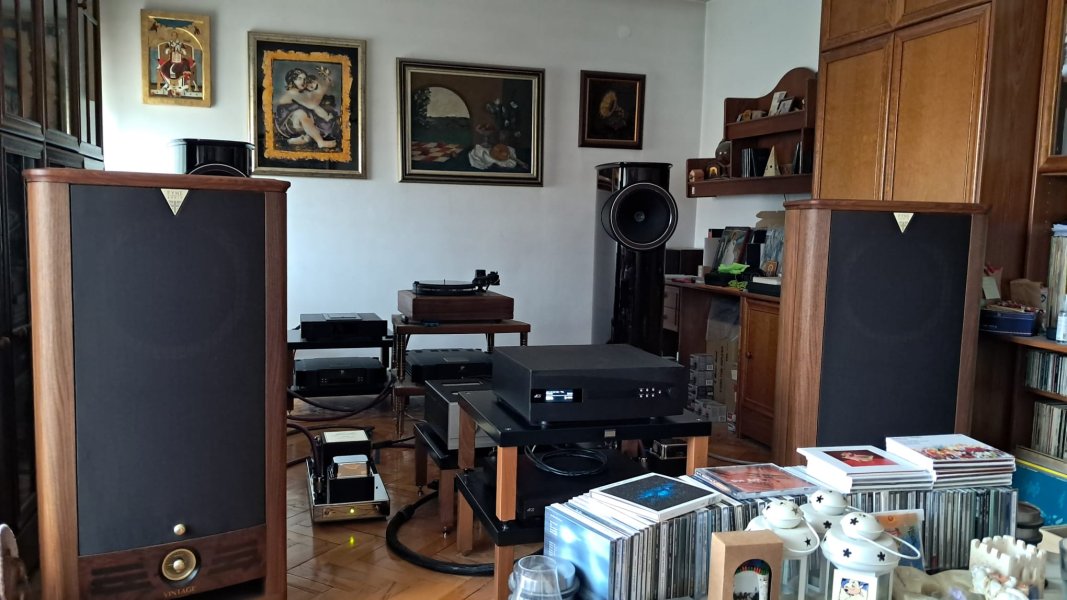Huh always quite difficult to start the thread and kick of the writing part especially when I need to write about the unit which has been developed by two good buddies out of which one of them is a really close friend. I'm saying this as I would love to be transparent from the get go as some might color me biased. Now putting that off my chest I can move to the topic and the topic of this write up is the preamplifier those boys came up with from the scratch on a white empty pcs of paper designing electronics, propriatary volume control, chassis design and of course making it as such.
Guess few of You who read something I wrote might remember that I'm really into tube preamps and I had quite a few of them from ARC, ModWright, few DHT ones from Tobian which I use to this day (SC12) hence I could say that I know what I like/dislike from the tube preams.
As I did with few other write ups, I'll divide it into parts and I'll start with the appearance. Forgot to mention - they named it 'The Conductor'.
Appearance:
Looking at it at my shelf there’s a quiet confidence to it, which somewhat was confirmed by my wife who rearly comments any of my HiFi gear (swaps) - guess she's fed up with it . It doesn’t scream for attention with flashy lights or oversized logos. Instead, it sits there low-slung, brushed aluminum, precisely CNC machined from 6-20mm slabs and quietly imposing—like a piece of industrial art that just happens to make music and before doing so tries to pull your muscles placing it in the rack. The volume knob is a tactile joy. It glides with the kind of resistance that suggests precision bearings and obsessive engineering. The dot-matrix display is a charming nod to vintage gear, but its clarity and simplicity are thoroughly modern. It tells you what you need to know - nothing more, nothing less and to my oldish eyes it is actually more as I'm able to easily see the numbers and volume level...much appreciated. Remote also done from a slab of aluminum covering all neccessary functions like Vol, Input, Mute.
. It doesn’t scream for attention with flashy lights or oversized logos. Instead, it sits there low-slung, brushed aluminum, precisely CNC machined from 6-20mm slabs and quietly imposing—like a piece of industrial art that just happens to make music and before doing so tries to pull your muscles placing it in the rack. The volume knob is a tactile joy. It glides with the kind of resistance that suggests precision bearings and obsessive engineering. The dot-matrix display is a charming nod to vintage gear, but its clarity and simplicity are thoroughly modern. It tells you what you need to know - nothing more, nothing less and to my oldish eyes it is actually more as I'm able to easily see the numbers and volume level...much appreciated. Remote also done from a slab of aluminum covering all neccessary functions like Vol, Input, Mute.
Back panel is of course populated with inputs 3x XLR (RCA) and one XLR Out. As it is fully differential unit it only has Balanced out which for me is perfect.
Inside:
If I say something about the intestines of it, it would be the following - it’s a dual-mono cathedral of craftsmanship. Separate transformers for each channel. Shunt-regulated B+ supplies. Stacked attenuator boards. Tubes it uses are NOS E88CC (CCa) or 6N23Ps (supplied with the unit) from the 1970s and those are responsible for the gain of our precious signal received from the source and they are nestled like relics from a golden age of audio among shiny new boards and shabang of other electronics and parts.
I absolutely need to mention gain adjustments as they also included this into the design (I know that in a few of the top gun ones You can do it via remote control but i still like switches). It is user selectable at (6.5, 8, 15, 20 dB) and I do find it as more than a technical feature - it’s a system-matching superpower. With high-output DACs like my Lampi H360, I found 6.5dB ideal while at friends place with the source within the 2V industry standard 15 or even 20dB was a tip top option and the ability to fine-tune gain without altering the sonic signature is a fantastic option to have and this pre realy nails it.
Listening:
For this part I/we selected several tunes we played and in the nutshell short summary would be as follows.
From the first note I was quite shocked (I'm used to my one stage DHT pre with 10Y/801 tubes) as it sounded tone wise super close to Tobian but with a tad more speed as well as a bit more kick in the low registers. Overall it simply steps aside and lets the music through. If I disect it on the song basis it would look like this.
Jazz at the Pawnshop – Arne Domnérus
To me a torture test for spatial cues and microdynamics. With this pre the venue came alive. You could hear the clink of glasses, the rustle of jackets, the subtle decay of a vibraphone note hanging in the air. There is a beautiful touch of warmth and dimensionality.
Beck – Morning Phase
This album is a lush, layered soundscape, and The Conductor unraveled it with grace. The strings in “Wave” swelled with cinematic grandeur, while Beck’s voice floated dead center, intimate and textured, everything delivered with a velvet glove.
Daft Punk – Giorgio by Moroder
This track is a rollercoaster of analog synths, live drums, and spoken word. The dynamic swings are massive. They are handled with aplomb, never compressing or hardening. The transitions from Giorgio’s monologue to the explosive instrumental sections were seamless.
Fleetwood Mac – Dreams (24/96 remaster)
This track is all about groove and space. The kick drum had just the right amount of thump, the hi-hats shimmered without sizzle, and Stevie Nicks’ voice was hauntingly present. The timing and flow, making it impossible not to tap your foot.
Arvo Pärt – Spiegel im Spiegel
Minimalism demands purity. Here, the piano and violin were rendered with breathtaking clarity and emotional weight. The silence between notes was as important as the notes themselves. This was a proper honoring of the music not just pure reproduction.
Sumup:
Always difficult to sum it up in a few words - but shortly it could be - an absolute killer of the preamplifier. Built like a reinforced concrete wall to last an eternity and outlive the nucler arrmagedon, while upon turning it ON being able to seduce You to forget all the crap of the world we live in, and day to day issues we have. Having slam of an elephant and at the same time being gentle as a lamb when needed so. Very rare traits summed up in one unit - getting the best of solid state but wrapped in a tone of a tungsten filament directly heated triode. Absolute hats down to these guys!!!!
I know that few guys here around are enjoying this pre and would be nice to read their imporessions not to rely only on me so it would be nice if they could chime in with their thoughts....
Also few pictures of the unit itself...
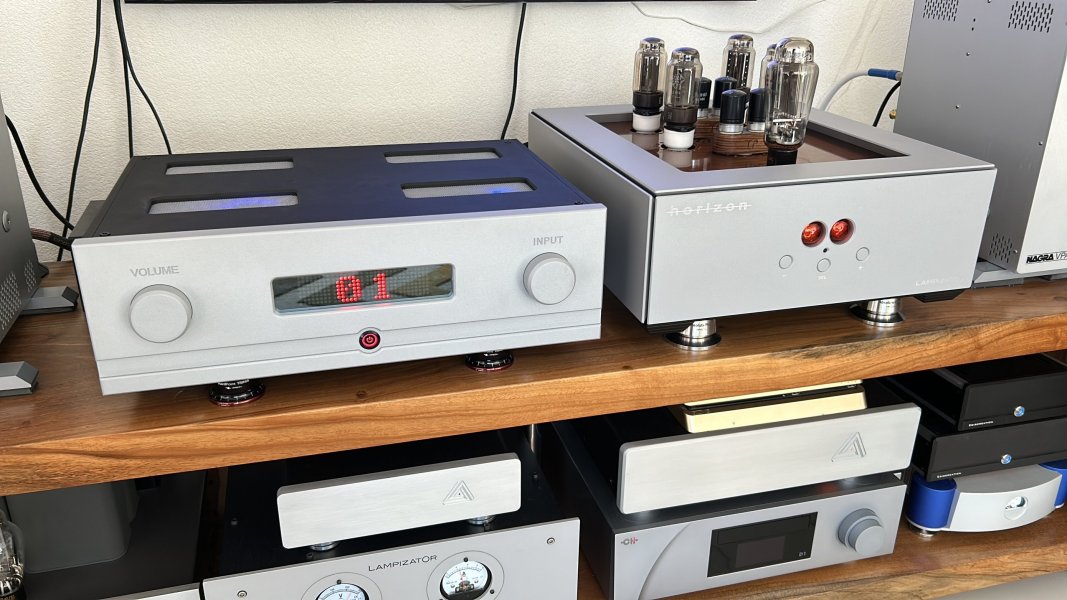
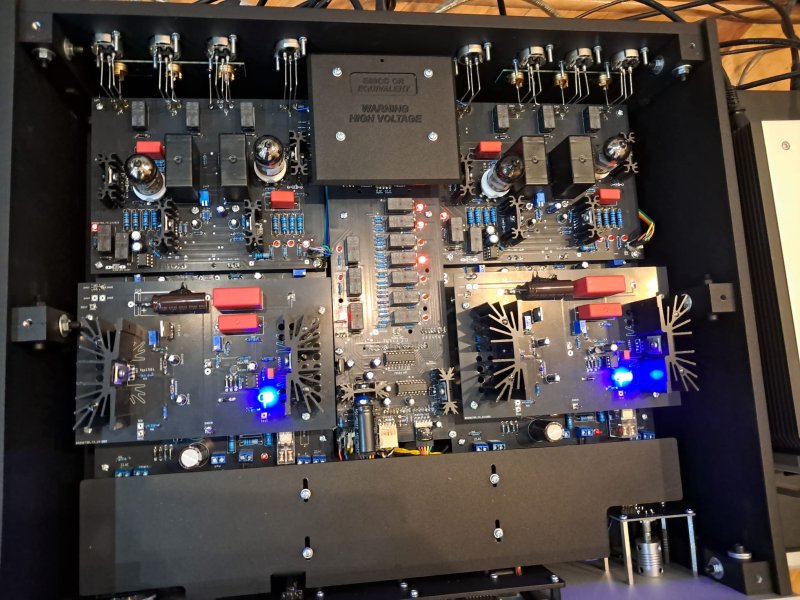
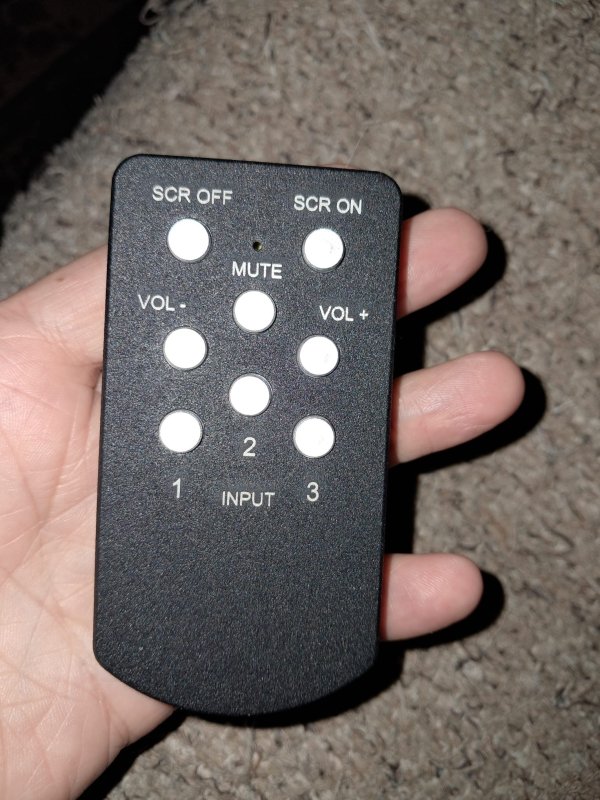
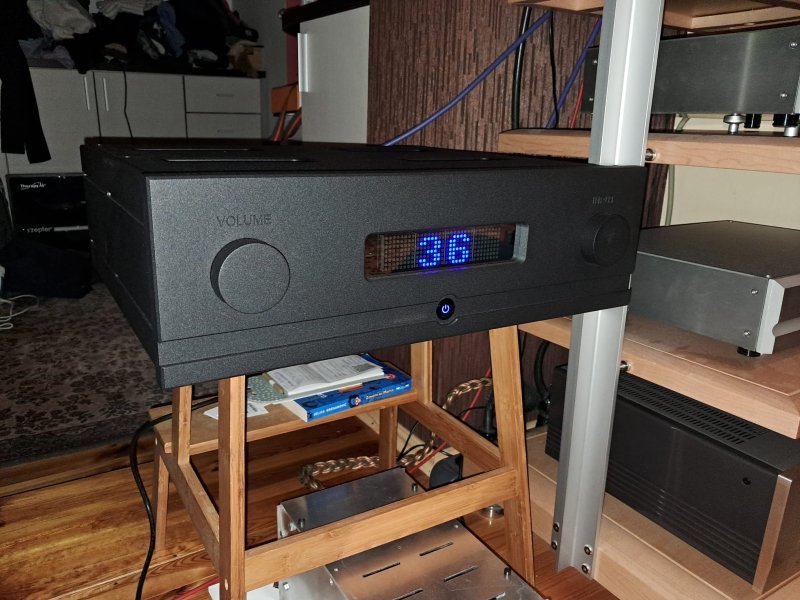
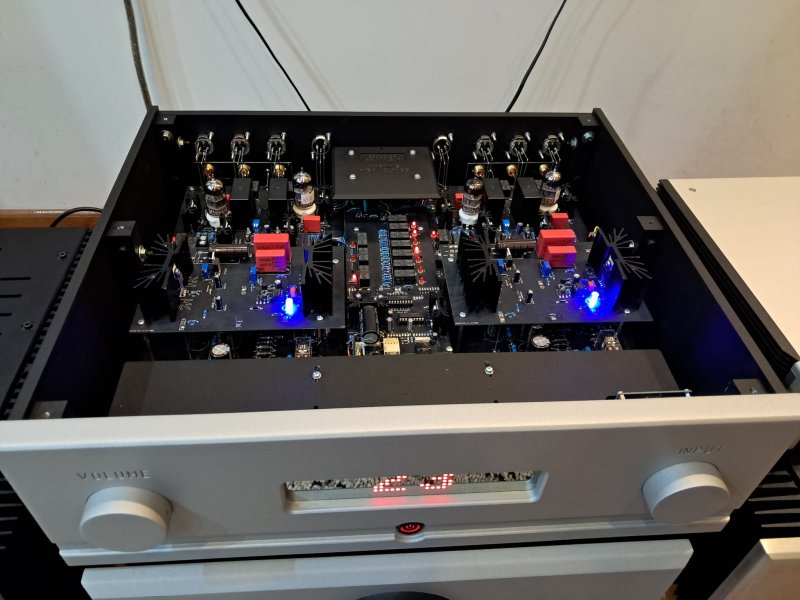
Guess few of You who read something I wrote might remember that I'm really into tube preamps and I had quite a few of them from ARC, ModWright, few DHT ones from Tobian which I use to this day (SC12) hence I could say that I know what I like/dislike from the tube preams.
As I did with few other write ups, I'll divide it into parts and I'll start with the appearance. Forgot to mention - they named it 'The Conductor'.
Appearance:
Looking at it at my shelf there’s a quiet confidence to it, which somewhat was confirmed by my wife who rearly comments any of my HiFi gear (swaps) - guess she's fed up with it
Back panel is of course populated with inputs 3x XLR (RCA) and one XLR Out. As it is fully differential unit it only has Balanced out which for me is perfect.
Inside:
If I say something about the intestines of it, it would be the following - it’s a dual-mono cathedral of craftsmanship. Separate transformers for each channel. Shunt-regulated B+ supplies. Stacked attenuator boards. Tubes it uses are NOS E88CC (CCa) or 6N23Ps (supplied with the unit) from the 1970s and those are responsible for the gain of our precious signal received from the source and they are nestled like relics from a golden age of audio among shiny new boards and shabang of other electronics and parts.
I absolutely need to mention gain adjustments as they also included this into the design (I know that in a few of the top gun ones You can do it via remote control but i still like switches). It is user selectable at (6.5, 8, 15, 20 dB) and I do find it as more than a technical feature - it’s a system-matching superpower. With high-output DACs like my Lampi H360, I found 6.5dB ideal while at friends place with the source within the 2V industry standard 15 or even 20dB was a tip top option and the ability to fine-tune gain without altering the sonic signature is a fantastic option to have and this pre realy nails it.
Listening:
For this part I/we selected several tunes we played and in the nutshell short summary would be as follows.
From the first note I was quite shocked (I'm used to my one stage DHT pre with 10Y/801 tubes) as it sounded tone wise super close to Tobian but with a tad more speed as well as a bit more kick in the low registers. Overall it simply steps aside and lets the music through. If I disect it on the song basis it would look like this.
Jazz at the Pawnshop – Arne Domnérus
To me a torture test for spatial cues and microdynamics. With this pre the venue came alive. You could hear the clink of glasses, the rustle of jackets, the subtle decay of a vibraphone note hanging in the air. There is a beautiful touch of warmth and dimensionality.
Beck – Morning Phase
This album is a lush, layered soundscape, and The Conductor unraveled it with grace. The strings in “Wave” swelled with cinematic grandeur, while Beck’s voice floated dead center, intimate and textured, everything delivered with a velvet glove.
Daft Punk – Giorgio by Moroder
This track is a rollercoaster of analog synths, live drums, and spoken word. The dynamic swings are massive. They are handled with aplomb, never compressing or hardening. The transitions from Giorgio’s monologue to the explosive instrumental sections were seamless.
Fleetwood Mac – Dreams (24/96 remaster)
This track is all about groove and space. The kick drum had just the right amount of thump, the hi-hats shimmered without sizzle, and Stevie Nicks’ voice was hauntingly present. The timing and flow, making it impossible not to tap your foot.
Arvo Pärt – Spiegel im Spiegel
Minimalism demands purity. Here, the piano and violin were rendered with breathtaking clarity and emotional weight. The silence between notes was as important as the notes themselves. This was a proper honoring of the music not just pure reproduction.
Sumup:
Always difficult to sum it up in a few words - but shortly it could be - an absolute killer of the preamplifier. Built like a reinforced concrete wall to last an eternity and outlive the nucler arrmagedon, while upon turning it ON being able to seduce You to forget all the crap of the world we live in, and day to day issues we have. Having slam of an elephant and at the same time being gentle as a lamb when needed so. Very rare traits summed up in one unit - getting the best of solid state but wrapped in a tone of a tungsten filament directly heated triode. Absolute hats down to these guys!!!!
I know that few guys here around are enjoying this pre and would be nice to read their imporessions not to rely only on me so it would be nice if they could chime in with their thoughts....
Also few pictures of the unit itself...





















